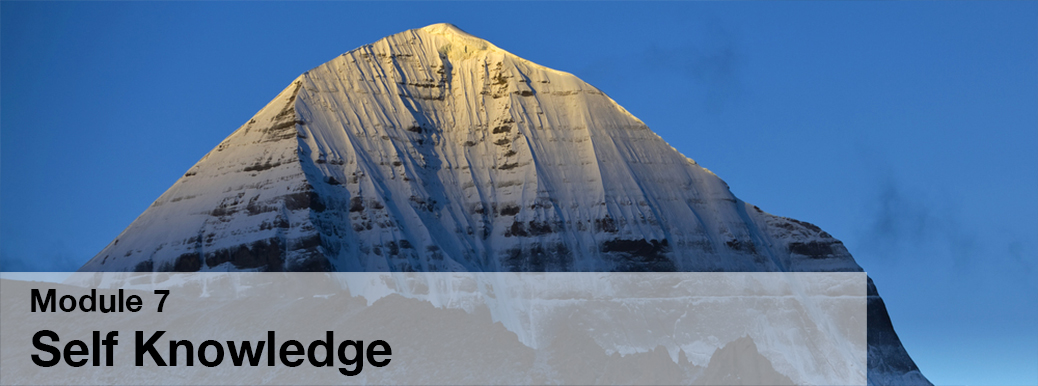Introduction
The previous chapters of this module all dealt with topics at the individual level or microcosm. This chapter is going to focus on the macrocosm (Samasti), more specifically on the topic of creation.
This chapter will answer these 3 questions:
1) What was there before creation?
2) How did creation happen?
3) What were the stages of creation?
Vedic Cosmology
Creation vs Manifestation
It’s an inaccurate word because the law of conservation of matter and energy says that nothing can be created or destroyed.
So the more appropriate word would be manifestation; manifestation of something which existed in an unmanifested state.
So we define creation as when the dormant unmanifested something came into manifestation.
However for the sake of simplicity we will refer to creation as creation, but it is to be understood as manifestation.
What is Maya?
Unmanifest is that which is existent, but not available for perception or transaction, just as butter exists in milk in potential form.
We know milk has butter, but for all practical purposes butter is not available for perception or transaction. So we assume butter is non-existent.
We can extend this example to everything in creation. Everything we see in creation always existed in potential form, and later it came into manifestation i.e available for perception and transaction.
The scriptures say that before the cosmos came into manifestation, it should have existed somewhere because of the law of conservation of matter and energy. And if creation existed before, it should have existed in unmanifest, potential and dormant form, which we call the seed (Bijam) of creation.
This seed of creation that is the source of all forms of energy and all forms of matter, which includes all particles and molecules in creation, which includes the 3 Bodies (Gross, Subtle and Causal), is the Causal Matter. Vedanta calls this causal matter as Maya.
This means before creation, one thing existed; Maya.
From what we learnt in the previous chapter, another thing also existed before creation. In the previous chapter we saw that Atma is the consciousness principle which is non-material in nature, and which does not come within the bounds of time and space.
If consciousness is beyond time and space, it has to be eternal. That means consciousness existed before creation.
So we have established two things which existed before creation:
So Atma plus Maya existed before creation.
Brahman and Isvara
Consciousness is not different, only the nomenclature in Vedanta is different. Atma is the same as Brahman.
So the study of cosmology begins with two begining-less principles known as Brahman plus Maya or consciousness plus matter. Brahman in association with Maya is called Isvara.
It’s important to note that we always say Brahman plus Maya. This is because Maya is not an entity independent of Brahman. Maya is infact a power of Brahman, Maya Shakti. We will explore more about the relationship between Brahman and Maya later in the chapter.
Differences between Maya and Brahman
The differences between them are:
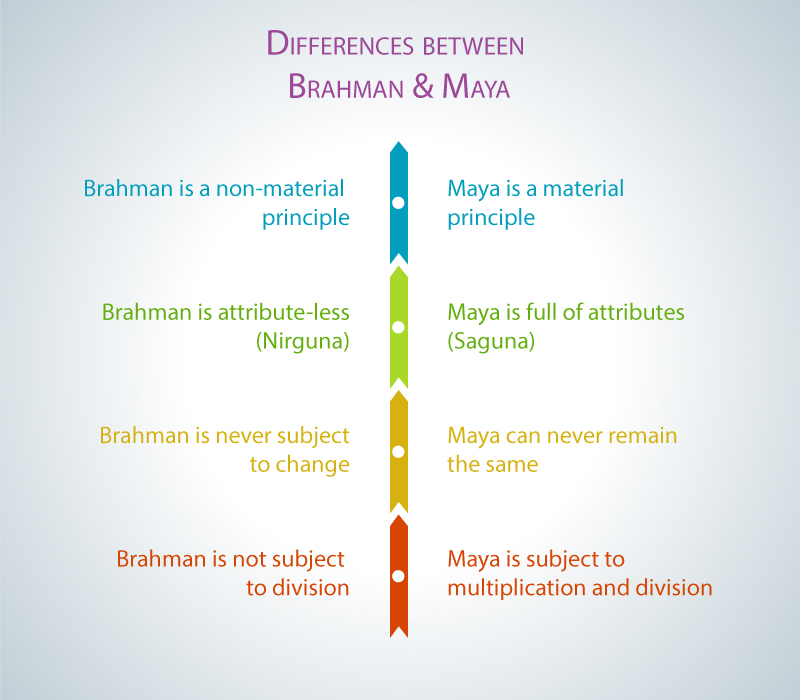
These are the basic differences between Brahman and Maya. From the combination of Brahman plus Maya (Isvara), the Universe manifests. The Universe is a manifestation, not a creation.
How Creation Happened?
The 2 Stages of Manifestation
Maya is the seed. In the first stage, the Causal Matter becomes Subtle Matter i.e. the Subtle Universe evolves out of the Causal Universe. As we said earlier Brahman in association with Maya is called Isvara. So in the first stage Isvara appears.
And in the second stage, the Subtle Universe manifests to become the Gross Universe, which is then available for perception and transaction. It is in this stage that the Jivas appear.
The Subtle and Gross Universe can be compared to the mind and the body. The mind is an example of subtle manifestation, and the body an example of gross manifestation. The mind is only available to me because it is subtle, whereas my body is available for others to perceive and touch because it is gross.
Therefore the stages of creation are:
Causal Universe –> Subtle Universe –> Gross Universe
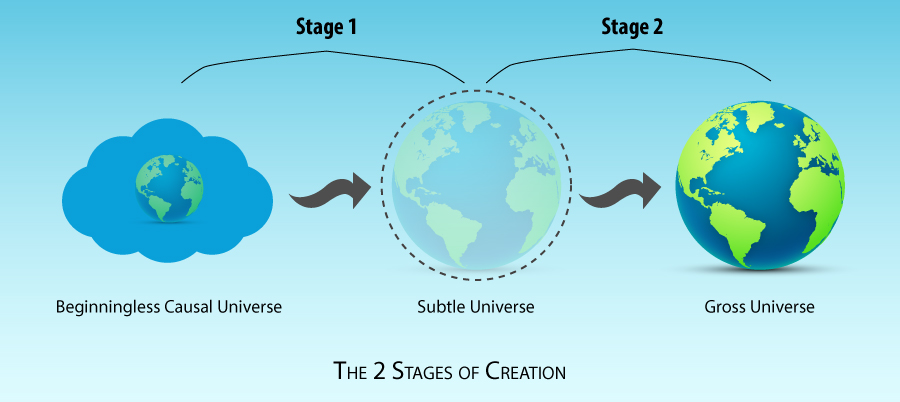
Of these, the Causal Universe is beginningless, but the Subtle and Gross Universe have a beginning.
Once the creation has fully manifested into the Gross form, what happens next?
The creation continues for a certain time, and once the time has come for the play or drama of creation to end, creation collapses and condenses, evolution becomes dissolution, the gross becomes causal i.e. the Universe goes back into Maya.
Until once again it’s time for the creation to manifest again. Thus the cycle repeats again. The unmanifest becomes manifest, and the manifest becomes unmanifest.
The Universe is always there, only the state changes, from causal to gross, and from gross to causal. There is never any increase or decrease in matter, only the state of matter changes. Unmanifest to manifest condition, and manifest to unmanifest condition.
Stage 1 – The Subtle Universe
The scriptures say that out of the Causal Universe, 5 subtle elements were born. These are also called Pancha Mahabhuta, the 5 Great Elements. The elements evolved in this order:
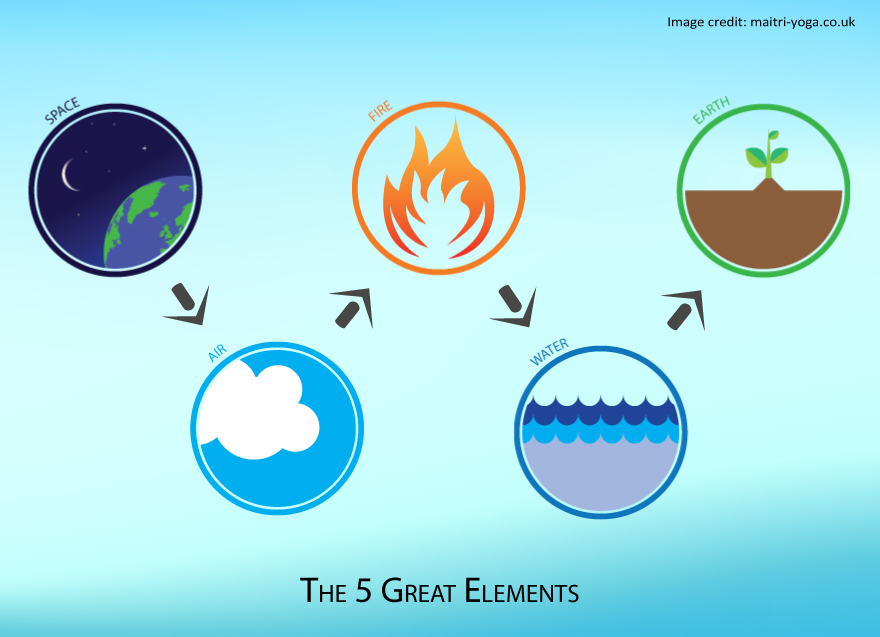
These are subtle elements, hence not available for perception and transaction.
The Earth element doesn’t literally mean the earth, but the solid form of matter. Similarly, the Water element does not mean water, but the liquid form of matter.
In modern science, we have 4 states of matter: solid, liquid, gas or vapour, and plasma. In Vedanta, we go even beyond and have a 5th state; Space.
Now since the 5 elements have evolved from Maya, whatever features belong to Maya also belong to the elements. This is because features belonging to the cause also abide in the effect.
So whatever be the features of Maya, they exist in the Universe, and likewise the features of the Universe exist in Maya.
The 3 Gunas
In Vedanta these 3 features are known as:
These 3 Gunas are inherent in Maya, the 5 elements, and everything in creation.
However the Gunas here should not be understood to mean a property or an attribute. A guna is a component of Maya.
The 3 Gunas are like 3 strands of a plaited string. Hence one of the meanings of the word Guna is a string or a rope.
These 3 Gunas are present in all 5 elements. So we have the Sattva component of Space element, Tamas component of Space, and Rajas component of Space. The same applies to the other 4 elements as well.

These 3 Gunas have to be understood as Macrocosmic Gunas. The 3 Gunas exist at the level of Jiva also. So to distinguish the two varieties of Gunas, the Gunas we talk about in this chapter should be considered as Macrocosmic Gunas.
So the first stage is the manifestation of the Subtle Universe from the Causal Universe.
Maya, Isvara, Gunas and the Jivas
Maya enjoys the power of veiling (Avarana Shakti) and projecting (Vikshepa Shakti). At the first stage of creation Maya’s veiling power is unmanifest and inactive, but its projecting power is manifest and active. Veiling is Macrocosmic Tamas and projecting is Macrocosmic Rajas.
Rajas shatters the pure mirror of Maya into innumerable shards or Jivas and scatters them throughout the Universe.
Once the Jivas appear, the veiling power(microcosmic Tamas) becomes active. Because Isvara is prior to the appearance of Tamas, it is not deluded by Maya. For this reason it is not possible to blame Isvara for the evils in the world; they can be attributed to ignorance of Isvara by the Jivas.
Because their Subtle Bodies are veiled, Jivas are ignorant of the fact that they are free. At the same time that Maya veils the Jivas, microcosmic Rajas extroverts them and they see only objects. The veiling makes them feel incomplete and they assume gaining the objects that they experience can complete them.
Thus they develop meritorious (Punyam) and deleterious (Papam) tendencies (Vasanas). Therefore the world, which seems real to them, but is actually value neutral, becomes a field of experience that yields pleasure and pain for them. Jivas are therefore at the mercy of Isvara in the form of the world.
Isvara, also sometimes called God, is not an experiencer, a big person situated in the spiritual sky. It is just an impersonal power that creates the material objects and Jivas, and indifferently delivers the results of their actions.
Isvara is not fickle like Jivas, although it often seems as if it is. When it delivers unwanted results, Isvara is feared and hated, and when it delivers wanted results, it is loved and worshipped.
The Jiva’s Subtle Bodies are coloured by biases, opinions, beliefs, fantasies, knowledge and erroneous knowledge. It’s subjective experience is called Jiva’s duality or Jiva’s creation (Jiva Shristi).
Objects of this world created by Isvara have no intrinsic value. It’s Jiva’s Vasanas that convert them into objects of enjoyment or suffering. Material objects, gross and subtle, are value neutral as they are inert projections of Isvara.
They acquire value in Jiva’s subjective creation based on their Vasanas. One person may feel happy on obtaining an object, whereas another may feel disappointed on obtaining the same object.
Jivas do not experience objects; they experience their Vasanas.
The gross objective world (Vyavaharika) is created by Isvara, and the subjective world (Pratibhasika) is created by the Jiva.
Jiva lives in its own internal world. Here world means “experience”, not physical objects. Isvara creates the idea of a Jiva and the objects with which Jiva interacts. Isvara is not an enjoyer. It is a projector and the light in the projector, and Maya is the film and the movie is the world of gross and subtle objects.
Manifestation of the Subtle Bodies
The Role of Sattva Guna
In the Subtle Body we have 5 organs of knowledge – eyes, ears, nose, tongue and skin. This is the knowing faculty. It is the 5 subtle elements that manifest to become the 5 subtle organs of knowledge.
As we mentioned earlier, each element is composed of 3 Gunas. So which Guna would be responsible for manifesting the 5 organs of knowledge, the knowing faculty?
Sattva Guna stands for the power of knowledge, therefore the Sattva Guna component of all the 5 elements is responsible for the manifestation of these 5 organs.
The order of manifestation is:
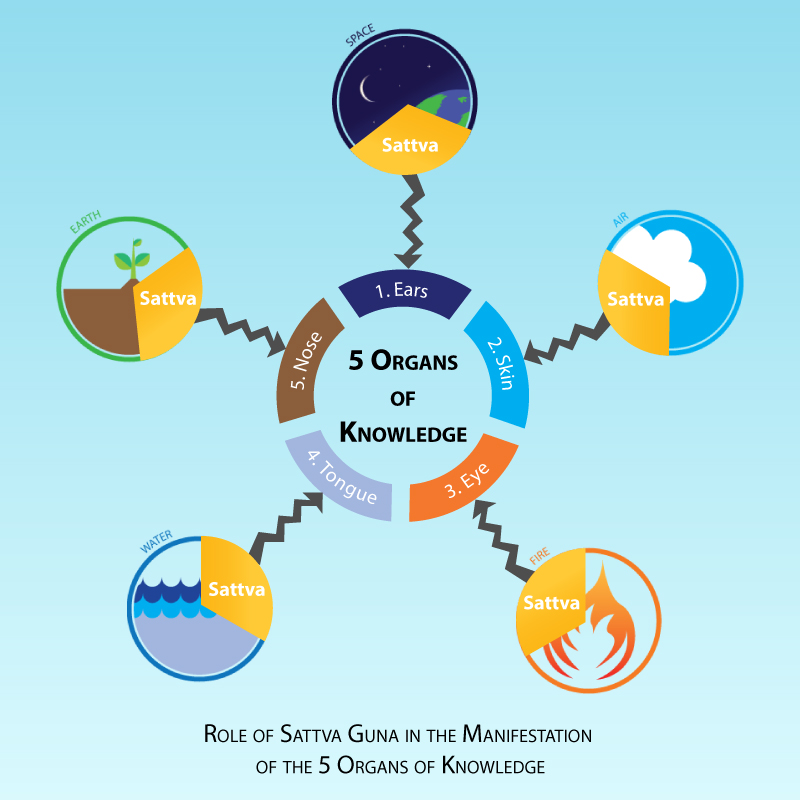
In addition to the 5 organs of knowledge, there is another component of the Subtle Body which is part of the knowing faculty in a Jiva – the 4 internal organs.
The 4 internal organs (mind, intellect, memory and ego), collectively called Antahkarana or the Mind, is also born out of the “combination” of the Sattva component of the 5 elements.

In the above image the 4 internal organs are surrounded by a dashed circle and none of the arrows directly touch an organ. This is to indicate that the Antahkarana or the Mind is manifested out of the combination of all 5 elements.
So the Sattva Guna component of the 5 elements manifests the 5 organs of knowledge and the 4 internal organs of the Subtle Body.
The Role of Rajas Guna
The organs of action represent the power of action, therefore the Rajas Guna is responsible for their manifestation.
The order of manifestation is:
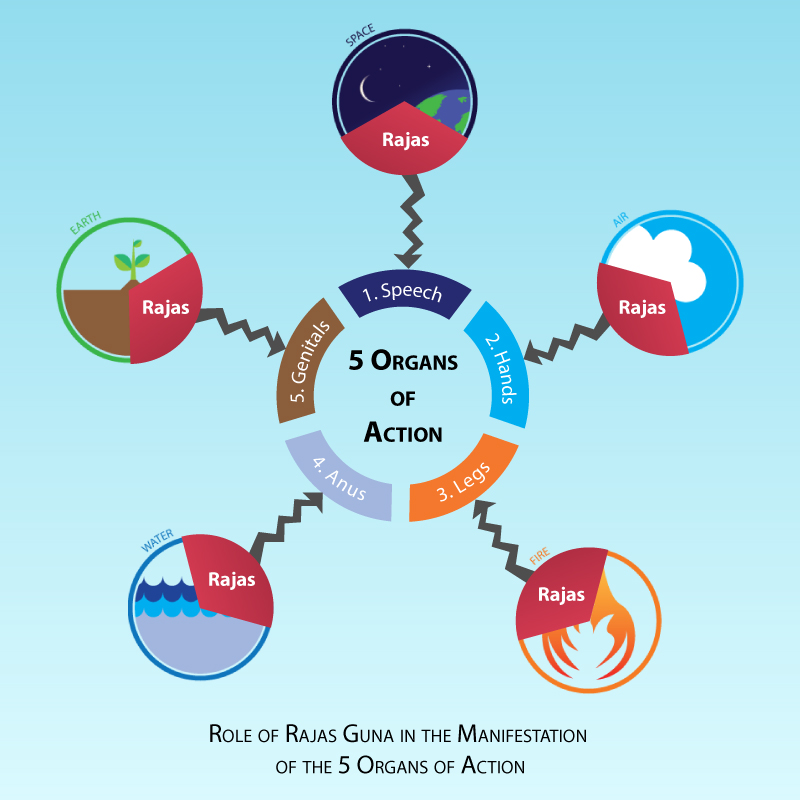
To operate the organs of action, Prana (life force) is needed. Without the power of Prana (Prana Shakti) no organ can act.
So similarly to the Mind, which is born out of the combination of the Sattva component of the 5 elements, the 5 Pranas – Prana, Apana, Vyana, Samana and Udana – are born out of the combination of the Rajas component of the 5 subtle elements.
This is an important point. The individual organs of knowledge and the organs of action are manifested out of the individual elements, whereas the Mind and the 5 Pranas are manifested out of the “combination” of Sattva and Rajas Gunas of all the 5 elements respectively.
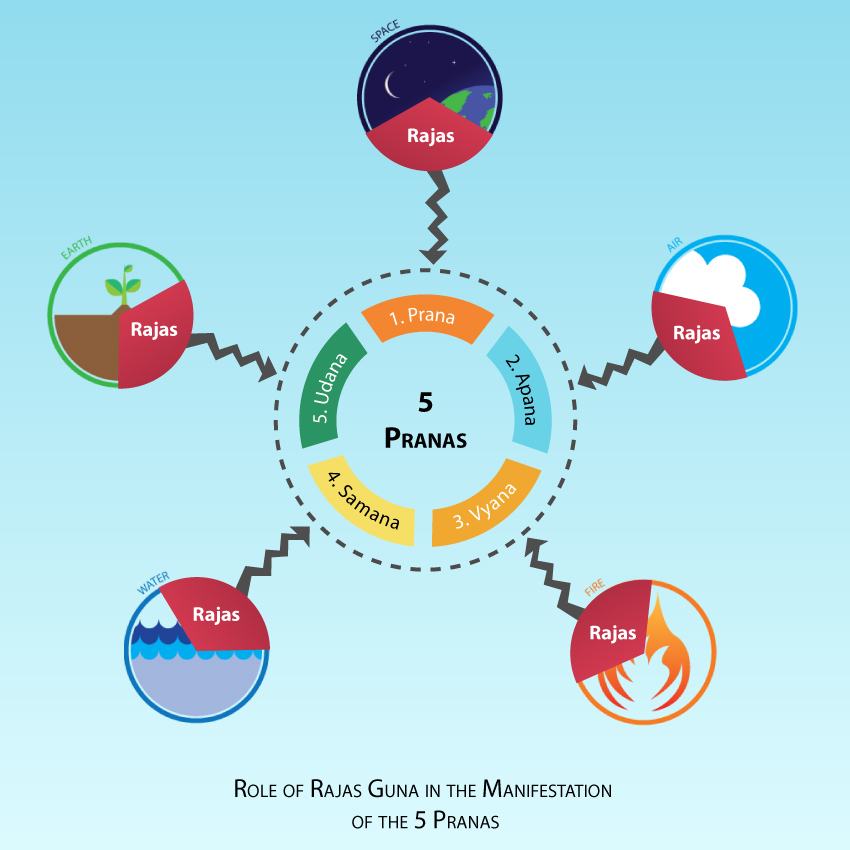
In the above image the 5 Pranas are surrounded by a dashed circle to signify that all the 5 elements combine to manifest the 5 Pranas.
So the entire Subtle Body is manifested out of the Sattva and Rajas Gunas of the 5 subtle elements. Tamas Guna is not involved in the creation of either the Subtle Body or the Subtle Universe.
Stage 2 – The Gross Universe
In the final stage the Tamas component of the 5 subtle elements get grossified to become the 5 gross elements.
Until grossification of the Universe, each element is pure. For e.g. the subtle element Space is constituted entirely of the Space element.
However during the final stage, the Tamas guna of all the 5 elements get mixed into various proportions to form the 5 gross elements.
So each gross element is not pure, but is a mixture of all 5 elements. So the gross element Earth has got not just the Earth element in it, but Space, Air, Fire and Water element as well.
Now the question arises that if each gross element is a mixture of all 5 elements, then how would you distinguish the elements?
The distinguishing is done based on the predominance of the elements. Even though all the 5 elements are used, the ratio of the individual elements differ.
For e.g. Gross Space has the elements in this ratio:
- 50% is Space element.
- The other 4 elements each constitute 12.5% or 1/8th portion of the element.. which would be – Air (12.5%), Fire (12.5%), Earth (12.5%) and Water (12.5%).

Once the gross elements are born, from it comes the entire cosmos, including our physical bodies.
Thus Maya is the Causal Universe. Out of it comes the Subtle Universe, which in turn manifests to become the Gross Universe. Thus creation happens. This is Vedic Cosmology.
Relationship between Brahman and Maya
Maya is the power of Brahman. Power does not exists apart from its possessor. At the same time, power is not identical with its possessor because even when the power is obstructed, its possessor remains the same.
Maya cannot be separated from Brahman just as you cannot separate the power of fire to burn from its power to illumine. Because Brahman has no beginning, Maya has no beginning. Maya and Brahman are one, but they are not the same.
We said earlier that out of the combination of Brahman plus Maya, the Universe manifests. This statement will now be clarified.
Brahman is Satyam, the only reality. We say there is only Brahman. Brahman “plus something” doesn’t exist at all.
Brahman is Satyam, and any “plus” is dependent upon Brahman for its existence, and is therefore Mithya (dependent reality). (Please refer the chapter on The 5 Sheaths for a more thorough explanation of Satyam and Mithya.)
The world is Brahman. If Brahman is limitless consciousness, without any particular form, then how could it become this world of forms? It did not. Consciousness remains the same without any change.
The gold does not become the chain. Only if it becomes the chain does the question arise “How did it become a chain?” Gold continues to be gold.
Once this is understood, then we can say Brahman “becomes” the world through Maya.
Nature of Maya
Maya is not non-existence (Shunyam) because a non-existent thing cannot borrow existence from Brahman, nor can it produce effects. If you define Maya as the cause of the world, then you cannot define it as non-existence because something that does not exist cannot cause something.
Is Maya real?
Maya is not real because it does not stand alone. It depends on Brahman. Even though it is eternal, it is not always manifest.
If it is not real or unreal, what is it?
Maya is like a dream. It is neither real nor unreal. A dream is real if you are in it, and unreal when you aren’t. Every erroneous notion is neither real nor unreal i.e. it’s Mithya. If it is real, it will never go away. If it is unreal, you will never experience it.
But you do experience it, so it’s Mithya, neither real nor unreal. It is seemingly real. It is unique in every way. Every object is Mithya. Whatever is experienced is Mithya.
The Mithya teaching is the essence of Vedanta and the key to Moksha. As long as you don’t know that consciousness is real and the world is seemingly real (brahma satyam jagan mithya), there is no Moksha for you. But when you understand Mithya, you can relax and stop allowing experience to trouble you.
Because Maya is Mithya, reality is not considered to be a duality. This is why we say reality is not-two (advaita). If Maya is real then reality is a duality.
Brahman with Maya is Isvara
Brahman plus Maya becomes Isvara. Just as Brahman with the 5 Sheaths as Upadhi becomes a Jiva, Brahman with the Upadhi Maya becomes Isvara. (Please refer the chapter on The 5 Sheaths for explanation on Upadhi.)
There must be something in Brahman which has this great power to create the Universe. That is Maya. With that power alone Brahman is Isvara, and is the maker and material cause of the Universe.
It is like the spider who with reference to the web is both the intelligent and material cause of the web.
With Maya Brahman is all-knowing, all-mighty, the maker. From the standpoint of Maya, he has undergone a change to become the world of space and time. From that standpoint Isvara becomes the material cause. But that Isvara is nothing but Brahman, and Maya is not separate from Brahman.
Therefore Brahman alone counts – Brahman plus Maya is Brahman; Brahman plus the world is Brahman. One is Satyam and everything else is Mithya. And you are that Satyam (tat tvam asi).
Understanding Avidya
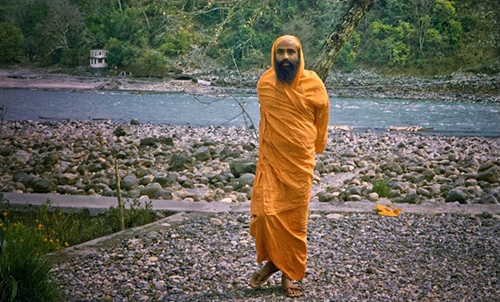
Swami Dayananda
When we look at the world what we see is all knowledge – in fact the world is a manifestation of knowledge. So a translation of Avidya as ignorance is wrong.
Is Avidya absence of knowledge?
It cannot be absence of knowledge either because there is no substance called “absence” – world cannot come from absence. Nothing is ever born of no-thing. Everything is born of something.. something positively existent. And Avidya is told to be the cause of the world.
So then what is the meaning of Avidya?
The cause of the world can only be the Maya Shakti (power) of Brahman – the power of absolute consciousness to create, sustain and resolve all that is here that appears to be many.
Scripture points out that duality does not exist any which way you look at it. Because this world is an effect of Brahman and therefore this world, is non-separate from Brahman being its effect.
A golden chain is nothing but gold. In fact, there is no substance called chain; the chain is all the way gold, and simply a name for a form of gold. The cause is gold and the effect – the chain – is gold.
So too this world being an effect of Brahman is nothing other than Brahman. The cause exists without the effect, yet the effect can never exist without the cause.
Brahman is the cause of the world. Does Brahman exist without the world? Yes. It exists without the effect, but the effect does not exist without the cause.
In the Taittiriya Upanishad Brahman is presented as the cause of the Universe. “That from whom all beings have come, by whom they are sustained and into whom they go back – that is Brahman – may you know that Brahman.”
So the cause of the world is Brahman, not ignorance.
Avidya is “not knowing” the world to be non-separate from Brahman. This “not knowing” or Avidya goes away by knowledge.
What is – is one, non-dual. What you see is dual – taking that duality to be real is Avidya.
Summary
| 1. | The more appropriate word for creation is manifestation; manifestation of the Universe from an unmanifested state. Just as butter exists in milk in potential unmanifest form, the Universe exists in unmanifest seed form in Maya. |
| 2. | Two things existed before creation, Atma and Maya. At the macrocosmic level Atma is called Brahman. From the combination of Brahman plus Maya, the Universe manifests. Brahman in association with Maya is called Isvara. |
| 3. | There are 2 stages of manifestation: a) Causal Universe to Subtle Universe and b) Subtle Universe to Gross Universe. |
| 4. | In the first stage, out of the Causal Universe (Maya), 5 subtle elements were born: Space, Air, Fire, Water and Earth. |
| 5. | The 3 Gunas (Sattva, Rajas and Tamas) are inherent in everything in creation. The 5 subtle elements are also composed of the 3 Gunas. |
| 6. | The 5 Organs of Knowledge (Ears, Skin, Eye, Tongue and Nose) and the 4 Internal Organs (Mind, Intellect, Memory and Ego) of the Subtle Body are manifested by the Sattva Guna component of the 5 subtle elements. |
| 7. | The 5 Organs of Action (Speech, Hands, Legs, Genitals and Anus) and the 5 Pranas (Prana, Apana, Vyana, Samana and Udana) of the Subtle Body are manifested by the Rajas Guna component of the 5 subtle elements. |
| 8. | In the 2nd stage of creation, the Tamas Guna component of the 5 subtle elements gets grossified to become the 5 gross elements. |
| 9. | Each gross element is a mixture of the Tamas Guna component from all 5 subtle elements. Once the gross elements are born, from it comes the entire cosmos. |
| 10. | Maya is the power of Brahman. Maya cannot be separated from Brahman. |
| 11. | Brahman is Satyam, the only reality; creation is Mithya, dependent reality. Even after creation happens Brahman remains the same, just as gold continues to be gold even after we fashion it into a chain. |
| 12. | Maya is like a dream; neither real nor unreal. |
| 13. | Brahman with the 5 sheaths as Upadhi becomes a Jiva, and Brahman with the Upadhi Maya becomes Isvara. |
| 14. | Isvara is the intelligent and material cause of creation. |
